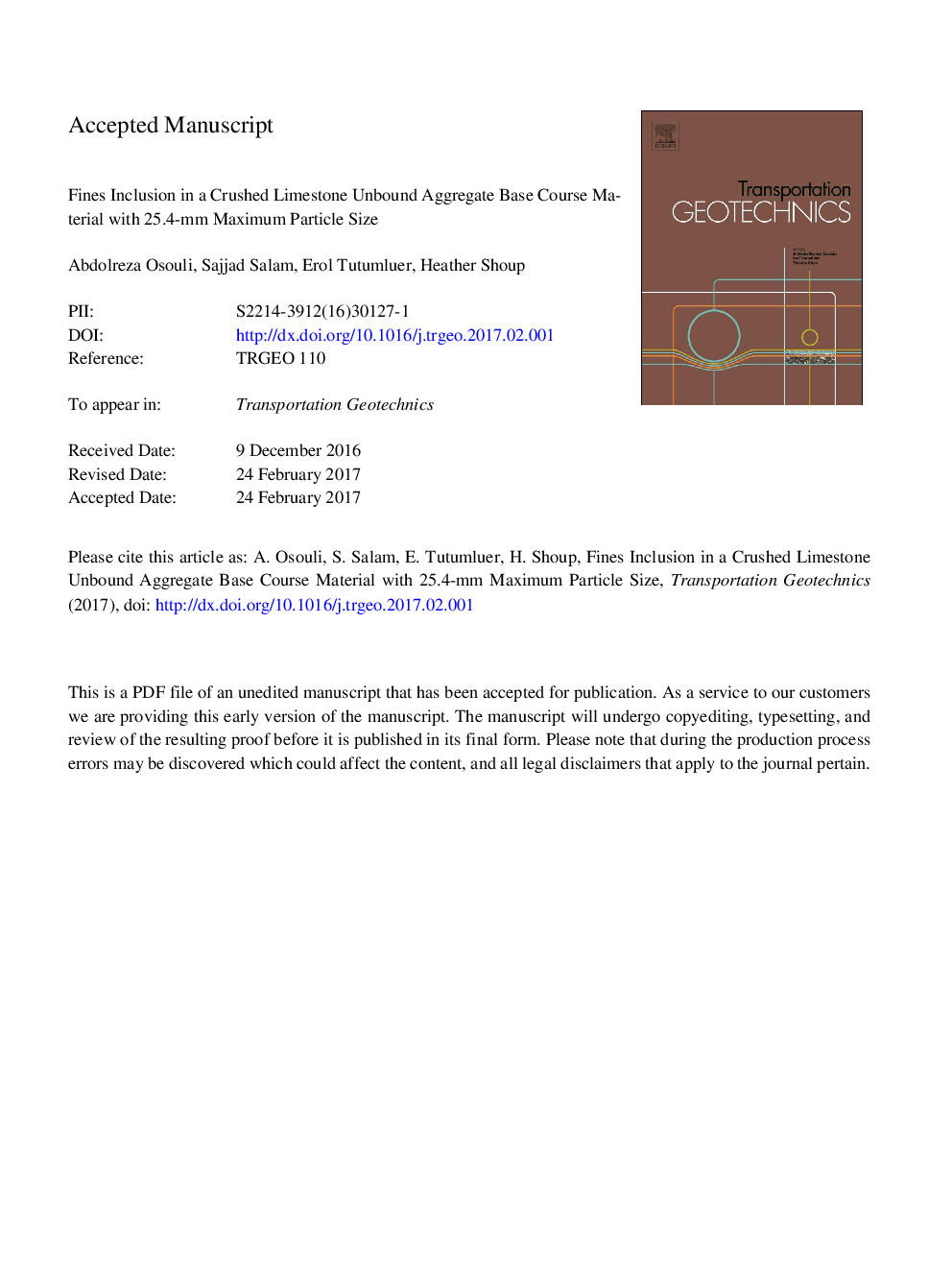| Article ID | Journal | Published Year | Pages | File Type |
|---|---|---|---|---|
| 4928801 | Transportation Geotechnics | 2017 | 26 Pages |
Abstract
Proper characterization of a dense-graded aggregate base/subbase material should include both quality and strength aspects. Gradation, passing the No. 200 sieve (smaller than 0.075 mm) fines content, and Atterberg limits for plasticity index (PI) are the most important properties that affect the quality and longevity of aggregates used as unbound layers in flexible pavement applications. The criterion used for allowing fines in high quality aggregates for highway applications vary among the state agencies. Most specifications call for controlling fines content, PI and the dust ratio, which is defined as percent passing the No. 200 sieve divided by percent passing the No. 40 sieve. In this study the effect of these fines on moisture-density relationship and strength of a crushed limestone aggregate with 25.4-mm (1-in.) maximum particle size was investigated. A typical range of 5-12% fines content inclusion with plasticity indices of 5-13% and dust ratios of 0.4-1.0 were studied. In order to evaluate the influence of each of these properties of the fines, a comprehensive number of samples were tested for the soaked California Bearing Ratio (CBR). The moisture sensitivity of aggregate strength was evaluated within ±1.5% of the optimum moisture content. The findings were summarized to propose a new approach for proper material selection based on the fines content and dust ratio.
Keywords
Related Topics
Physical Sciences and Engineering
Earth and Planetary Sciences
Geotechnical Engineering and Engineering Geology
Authors
Abdolreza Osouli, Sajjad Salam, Erol Tutumluer, Heather Shoup,
